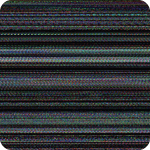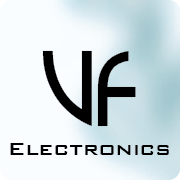Bioprinting I
Synopsis
Bioprinting is an ongoing experiment that utilizes data derived from biological organisms to create process-derived digital imagery. For Bioprinting I, two containers filled with earthworms were amplified with contact microphones and fed into a home-built, active ring-modulator, effectively creating a crude radio signal, with one container providing the carrier signal and the other serving as the modulator. The resultant signal was then fed into open-source, slow-scan radio imaging software, traditionally used in ham radio and deep-space radio-imagery transmission. Lacking a codec to properly interpret an image, each print serves as a static physical record of a sonic event, documenting the movement of the worms as they existed in a particular location, reflected by time, temperature, humidity, soil conditions, hardware and software settings, and the potential for digital (mis)interpretations as software is asked to descypher imagery from an audio signal that contains no specific encoding other than the data derived from the worms themselves.
Abstract
Bioprinting I – Cold War Aesthetics and Modern Vermiculture.
For this performance/installation, I would like to focus on a theme originally introduced as part of the 2010 Outsound New Music Summit in San Francisco, California as part of a group show in July 2010, and later officially premiered at the Centro Cultural de España in San José, Costa Rica at an opening sponsored by MUCEVI. Drawing on examples culled from both modern hardware hacking, as well as low-impact bio art, I would like to create a generative installation in which biological specimens, namely common earthworms, are utilized to create digital prints by way of re-purposed radio-technology over the course of an afternoon. To accomplish this task, I will utilize a primitive radio device, reverse-engineered to permit the encoding of any two audio signals into a single, modulated output. Said device has already been devised and is fully-functional. As inputs, two metallic containers containing approximately thirty earthworms apiece will be affixed to an array pf contact microphones, enabling the movement of the worms to be amplified to a level capable of triggering the previously mentioned radio. Once encoded, the signal from the worms will be input into a computer running open-source slow-scan radio software, originally designed to decode imagery from space flights during the Cold War (and still utilized on the International Space Station), though primarily currently used only by a small niche of ham radio operators. However, as the modulated worm signals are not encoded to fit within the algorithms of any particular radio protocol, the rendered images in turn become abstract chance operations in which a technological/biological symbiosis exists where both aspects of the project are involved with second-guessing the ghosts in the machine leading to something just shy of a digital reduction of an elephant’s masterpiece – or something to that extent.
The project is realized in this fashion: beginning promptly at a pre-determined time, the operator will arrive and assemble his equipment at an available desk or workstation – namely consisting of two containers of worms, a small amplifier, the custom radio box and a laptop, complete with photo-quality inkjet printer and enough photo paper to produce at least twenty-four prints. A small set of speakers will also be present to monitor the audio-content produced by the worms. Once all equipment is assembled, the operator will then begin producing prints, allowing for the radio software to utilize the longest exposure time and highest resolution possible within it’s technological confines. At the termination of each print’s exposure, the print will then be printed out as a high-resolution 6×8 photograph and temporarily mounted at pre-determined locations throughout the gallery. Once mounted, the operator will reset his software to allow for another print and begin again at regular intervals, allowing for conversation with interested parties, as well as brief performance breaks for food/bathroom, etc. As mentioned, this procedure will complete for the course of the installation, or until 24 prints have been created and mounted, whichever occurs first. At the end of the day, all technology will be disassembled and prints unmounted, leaving the gallery in a pristine, untouched state prior to leaving the premises. For this installation, all technology will be provided by the artist. All that is needed from the gallery would be a suitable space in which to work, as well as available space to mount the resultant prints.
Exhibition History
- 10.04.2011 – Centro Cultural de España, San José, Costa Rica.
- 10.18.2011 – Centro Cultural de España, San José, Costa Rica.
- 07.14.2012 – WGXC 90.7 FM, Masters on Main, Catskill, New York, USA.
- 07.14.2012 – Ciudad de la Imaginación, Quetzaltenango, Guatemala.
- 08.25.2012 – WXGC 90.7 FM, Catskill, New York, USA.
Awards and Accolades
- Honorable Mention, Concurso Centroamericano de Arte Sonoro MUCEVI 2011
Prints
Additional Imagery

An early rendition of the Bioprinting setup, San Francisco, Ca. c. July 2010. Photo courtesy of Amar Chaudhary.






